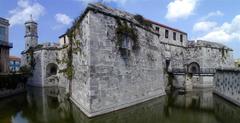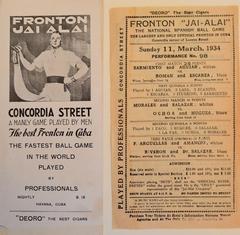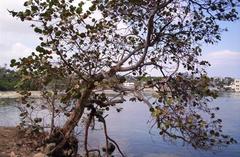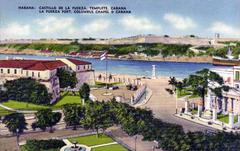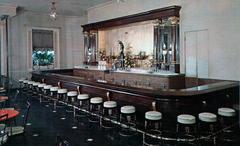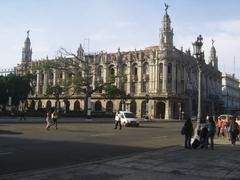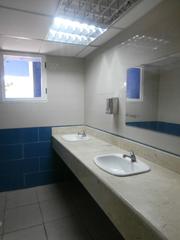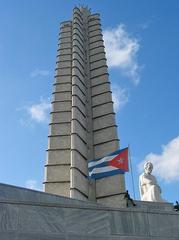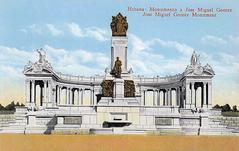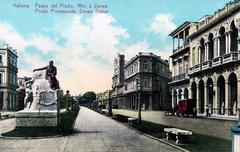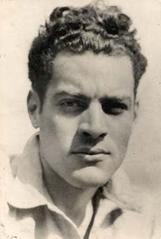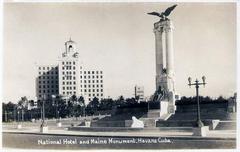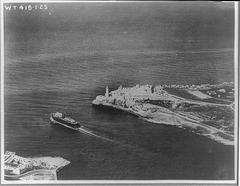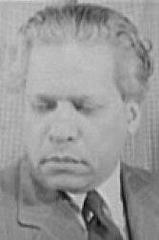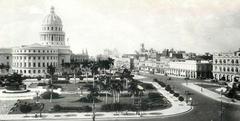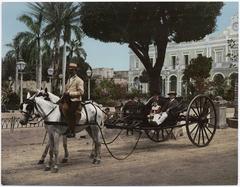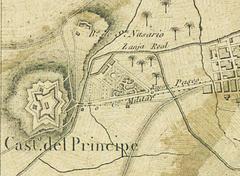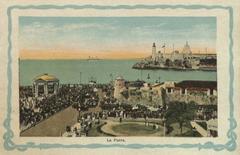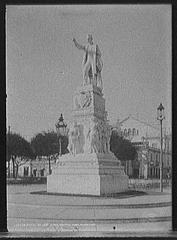
Havana Central Railway Station: Visiting Hours, Tickets, and Complete Travel Guide
Date: 04/07/2025
Introduction: A Living Monument of Cuban Rail Heritage
Havana Central Railway Station (Estación Central de Ferrocarriles de La Habana) is one of Cuba’s most iconic landmarks and a significant gateway to the nation’s rail network. Since opening in 1912, it has connected Havana with cities like Santiago de Cuba, Santa Clara, and Cienfuegos, standing as a testament to Cuba’s early adoption of rail transport and its architectural grandeur. As the country’s principal rail hub, the station blends neoclassical and baroque styles, symbolizing national progress and urban identity.
Currently, Havana Central is undergoing a major restoration and modernization from 2024 to 2030. During this period, the main building is closed, but a provisional terminal at the adjacent Coubre yard ensures that train services and the experience of Cuba’s rail legacy remain accessible. This comprehensive guide details visiting hours, ticketing, accessibility, historical significance, travel tips, and nearby attractions. Whether you are a railway enthusiast, a cultural traveler, or simply planning your journey across Cuba, Havana Central Railway Station is an essential stop in Havana’s vibrant cityscape (Rail Journal, Seat61).
Table of Contents
- Introduction
- Visiting Hours and Accessibility
- How to Purchase Tickets
- Historical Background: Colonial Foundations and Modernization
- Architectural and Urban Significance
- Social and Cultural Role
- Restoration and Modernization: 2024–2030
- Practical Travel Tips
- Nearby Attractions
- Frequently Asked Questions (FAQ)
- Key Historical Milestones
- Conclusion
- References and Further Reading
Visiting Hours and Accessibility
Current Status (2024–2030 Restoration)
- Main Station Building: Closed for restoration until at least 2027.
- Provisional Terminal (Coubre Yard): Open daily from 8:00 AM to 6:00 PM for passenger services and ticketing.
- Exterior and Public Spaces: The façade and surrounding areas can be viewed daily from 8:00 AM to 6:00 PM.
The restoration project is gradually improving accessibility, with the renovated station set to feature ramps, elevators, tactile guidance, and accessible restrooms. The provisional terminal offers basic accessibility features.
How to Purchase Tickets
- In Person: Tickets for all Cuban trains must be purchased at the station’s ticket offices—either at the temporary Coubre yard terminal or, once reopened, at Havana Central itself.
- Identification: A valid ID or passport is required for ticket purchase.
- Ticket Confirmation: Confirm your ticket at least one hour before departure to avoid cancellation.
- Online Sales: Online and mobile ticketing are expected to be introduced by 2027, but as of 2025, all sales are in person.
- Classes and Pricing: There are standard and air-conditioned classes; prices range from CUP 50–200 depending on destination and comfort level. Foreigners may have reserved seats on some trains.
Popular routes include the “Tren Francés” to Santiago de Cuba and express trains to Santa Clara and Cienfuegos. For high-demand routes, purchase tickets several days in advance (Seat61).
Historical Background: Colonial Foundations and Modernization
Early Railways in Cuba
Cuba inaugurated Latin America’s first steam railway in 1837, with the Havana–Bejucal line. The rapid growth of the network positioned Havana as the island’s rail hub, supporting the sugar trade and economic development. The construction of Havana Central Railway Station in 1912 marked a new era of urban expansion and architectural ambition.
20th Century Developments
The nationalization of railways after the 1959 Revolution turned Havana Central into the headquarters of Ferrocarriles de Cuba (FCC). Despite economic and political changes, the station remained a vital social space, witnessing countless migrations, reunions, and historical events.
Architectural and Urban Significance
Havana Central’s imposing neoclassical façade, grand arches, and distinctive clock tower are prominent in the city’s skyline. The building’s design draws from Spanish Renaissance and eclectic influences, reflecting Cuba’s cosmopolitan aspirations in the early 20th century. The ongoing restoration preserves these features while adding modern amenities, ensuring the station remains both a heritage landmark and a functional urban hub (Rail Journal).
Social and Cultural Role
Beyond transportation, Havana Central Railway Station is a symbol of national connectivity and a venue for cultural exchange. It has played a major role in Cuban literature, cinema, and visual arts, representing departure, reunion, and the passage of time. The concourse and platforms have served as gathering places for travelers, vendors, and musicians, underscoring its role in Havana’s daily life.
Restoration and Modernization: 2024–2030
The €1.8 billion modernization initiative, in partnership with Russian Railways, is the largest in the station’s history. Key upgrades include:
- Restoration of the historic façade and interiors
- New annexes for expanded waiting areas and offices
- Air-conditioned halls and digital information systems
- Free public Wi-Fi (by 2027)
- Advanced signaling and centralized traffic control for safety and efficiency
- Enhanced accessibility features
During the restoration, most arrivals use Havana Central, while departures are handled at Le Coubre station, a short walk away. Confirm your departure location when purchasing tickets (CiberCuba).
Practical Travel Tips
- Arrive Early: Allow extra time for ticketing and boarding, especially during restoration.
- Bring Essentials: Facilities are limited; carry water, snacks, toilet paper, and sanitizer.
- Language: Most signage is in Spanish; translation apps are helpful.
- Safety: The station is generally safe but be mindful of pickpockets.
- Accessibility: Improvements are underway, but some areas may be hard to navigate during construction.
Nearby Attractions
Havana Central Railway Station is ideally located for exploring some of Havana’s top sights:
- Capitolio Nacional: The iconic domed government building.
- National Theatre of Cuba: Known for architecture and performances.
- Old Havana (Habana Vieja): UNESCO World Heritage Site with colonial plazas and museums.
- Malecón: The famous seaside promenade.
- Museo Nacional de Bellas Artes: Cuba’s premier fine arts museum.
Classic American cars, taxis, and city buses provide easy connections to other parts of Havana (Mapcarta).
Frequently Asked Questions (FAQ)
Q: What are the visiting hours for Havana Central Railway Station?
A: Provisional terminal and station exterior accessible daily from 8:00 AM to 6:00 PM; main building closed until 2027.
Q: How do I buy train tickets?
A: Tickets are purchased in person at the provisional terminal; identification is required.
Q: Is the station accessible for travelers with disabilities?
A: Accessibility is improving; ramps and elevators are being added, but some areas are under construction.
Q: Can I take photos inside the station?
A: Yes, photography of the architecture is allowed; ask permission before photographing staff or restricted areas.
Q: Are guided tours available?
A: Occasionally, through local tour operators; check with tourism offices for current offerings.
Key Historical Milestones
- 1837: Havana–Bejucal steam railway inaugurated—the first in Latin America.
- 1912: Havana Central Railway Station opens, showcasing neoclassical design.
- 1959: Railways nationalized; station becomes FCC headquarters.
- 2019: Introduction of modern Chinese-built passenger cars.
- 2024: Major restoration and modernization project begins.
Conclusion
Havana Central Railway Station embodies Cuba’s railway heritage, architectural beauty, and evolving urban culture. Despite ongoing restoration, it remains an essential transit and sightseeing destination. By planning ahead—confirming visiting hours, purchasing tickets in advance, and exploring nearby attractions—you can make the most of your visit to this historic landmark.
For real-time updates, travel tips, and guided tour options, download the Audiala app and follow our social media channels. Immerse yourself in the story of Cuba’s railways and discover more about Havana’s rich history and vibrant present.
References and Further Reading
- CiberCuba article on modernization
- Rail Journal on Cuban network modernization
- Rail Journal on Havana station reconstruction
- Seat61 Cuba page
- Cuba’s Best – Trains in Cuba
- rail.cc Havana Station Information
- Mapcarta – Havana Central location
- Under30Experiences – Visiting Havana
- The World on My Necklace – Cuba travel tips
- Wikipedia – Havana Central railway station
- Cuba Headlines








